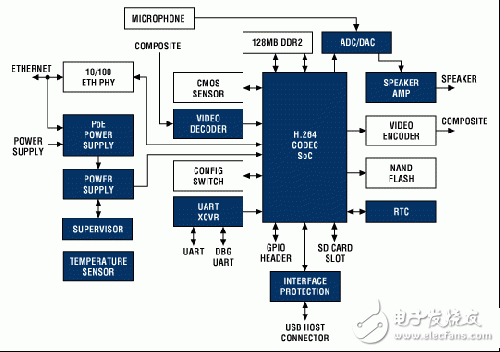introduction IP cameras in closed circuit television systems (CCTV) transmit audio, video data, and control signals over an Ethernet link in accordance with the Internet Protocol (IP). They have many advantages over traditional analog security surveillance cameras. Analog cameras typically transmit analog NTSC/PAL signals over coaxial cable. Unlike analog cameras: IP cameras support high definition (HD) graphics, intelligent analysis, local video storage, and Remote Control. Video compression techniques are commonly used in IP cameras with image analysis, video encryption (to prevent hacking), and the ability to package video data into Ethernet data. The compressed video data stream is sent to a hybrid digital video recorder (DVR) or a network video recorder (NVR) for storage, playback, and display. The IP network video surveillance system allows security monitors to remotely monitor and send pan/tilt/zoom (PTZ) commands over an IP network. The control center can control cross-zone or multi-site security surveillance cameras. The low-power camera is designed to be powered by Power over Ethernet (PoE) without additional power. Using the same cable to transfer data and power, PoE installation can significantly reduce wiring costs. In some cases, Ethernet can also be replaced by a wireless network (such as Wi-Fi) to facilitate camera layout. This is especially important for home security surveillance cameras that do not yet provide Ethernet, in which case a "cloud computing" DVR is used instead of a physical DVR. Multimedia streaming H.264 and motion JPEG compression technology In the case of equivalent image quality, the compression ratio of the H.264 video compression standard is approximately twice that of the earlier MPEG-4 standard. In the H.264 standard, the “high-end class†is defined as the highest video quality at the lowest bit rate, and is especially suitable for video security monitoring and other related applications. A coding scheme with a short response time (delay) helps to reduce the waiting time for security monitors. In addition, high-definition video encoding enables IP cameras to capture image details, such as facial features, license plates, etc., to improve image quality for secure surveillance. Due to the limited network bandwidth, the system is required to encode/record one HD data stream through a local area network (LAN), and also transmit a low-resolution image to the remote display through a wide area network (WAN). Mobicam3 720p H.264/M-JPEG IP Camera Reference Design In addition to H.264, many security surveillance systems also require backward compatibility with existing H.264-capable devices. The Motion JPEG (M-JPEG) standard provides backward compatibility and the ability to capture high-definition, lossless images. In particular, it supports H.264 encoding for uninterrupted video recording, as well as JPEG still images. Still image capture can be triggered by special events. Image analysis Image analysis is the process of analyzing video data and making decisions based on it. The software analysis function can be used to take corresponding actions according to special events, without the need for security monitoring personnel to input instructions. For example, if the camera detects someone passing through a safe area, an alarm signal can be sent. Image analysis features include motion detection, web and image tracking. All of these features need to be configured with an intuitive graphical user interface (GUI) in PC-based security monitoring management software. IP camera block diagram Embedded Linux? Software and network IP cameras need the ability to stream video data to multiple clients. For example, Maxim's IP Camera Reference Design (Mobicam3) supports up to 16 clients and supports Real-Time Transport Protocol (RTP) and Real-Time Data Stream Protocol (RTSP). In addition, the reference design also supports the following Ethernet protocols: HTTP, DHCP, SMTP, TCP Our company is specialized in supplying Welding Torch . Quick self-lighting,Brazes/Solders,Swirl Flame,variable flame control,Tip swivels 360 degree. Generates more heat than other hand torches. Faster brazing times and less gas consumption. Long life life. 4 interlocking safety button,reliable to use,comfortable handling. Designed for Propane or MAPP.CGA600 connections .Adjustable pressure .Use with MAPP or PROPANE TANKSTypical ApplicationsUsed for Copper/ Brass Tubes Welding/Brazing.Used for Copper/ Brass Fittings or Welding/Brazing.Valve Body made of Brass.For use with 14.1-16 OZ Containers.HVAC After Market Welding Torch Welding Torch,Welding Machine,Mapp Gas Torch,Gas Welding Torch ZHEJIANG ICE LOONG ENVIRONMENTAL SCI-TECH CO.,LTD. , https://www.china-refrigerantgas.com
